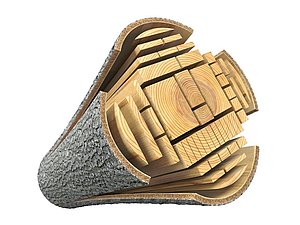Wood packaging material
Topic description
General

Wood packaging material (packaging), hereinafter referred to as LPM, is usually made of lower-quality wood that is less suitable for the production of higher-quality wood products. Since it is often used in international trade and can circulate between countries and continents for many years, it poses an important risk of introduction and spread of plant pests. The risk is higher when it is made from raw, untreated wood with bark.
The requirements for the entry of LPM into the European Union (EU) are laid down in Regulation (E) 2016/2031. The rules for LPM in international trade are defined by the International Standard for Phytosanitary Measures ISPM-15.
LPM used in international trade must comply with the following requirements under ISPM-15:
- it must be properly heat treated (mark HT) or dielectric heat treated (DH) or fumigated with sulfuryl fluoride (SF) or fumigated with methyl bromide (MB) – in the EU, the use of methyl bromide is prohibited,
- it must bear an official mark (stamp according to ISPM-15),
- it must be made from debarked wood (without bark).
Exceptions not subject to phytosanitary inspections under ISPM-15:
- wood products less than 6 mm thick,
- barrels for wine and spirits that have been heated during manufacture,
- gift boxes made of processed wood,
- sawdust, wood shavings and wood wool,
- wood permanently fixed to freight vehicles or containers,
- packaging material made of processed wood (plywood, particle board, etc.) manufactured using glue, heat or pressure.
Customs authorities carry out controls of LPM as part of regular inspections upon entry of goods into the EU customs territory and upon release for free circulation. If, during inspection, LPM is found that does not comply with ISPM-15 requirements or shows signs of harmful organisms, the consignment may not be released for free circulation. The customs authority notifies the competent regional office of the Administration of the Republic of Slovenia for Food Safety, Veterinary Sector and Plant Protection (UVHVVR), and the consignment may only be released with the approval of a phytosanitary inspector.
Legislation
EU legislation
Regulations
- Regulation (EU) 2016/2031 on protective measures against plant pests
- ISPM-15: Regulation of wood packaging material in international trade
National legislation
Acts
- Plant Health Act SI



